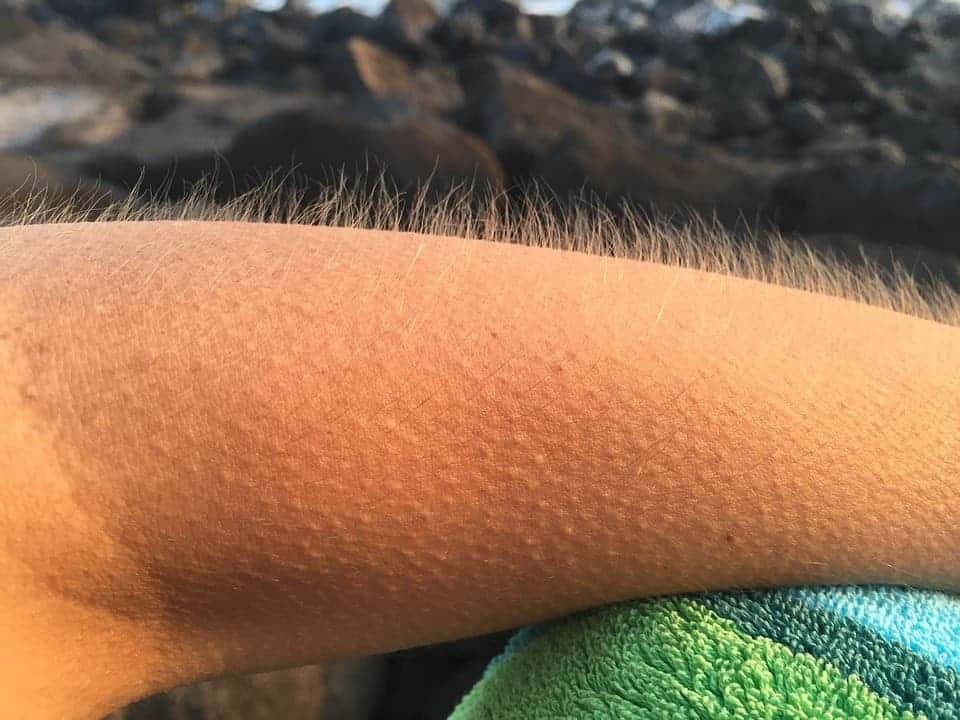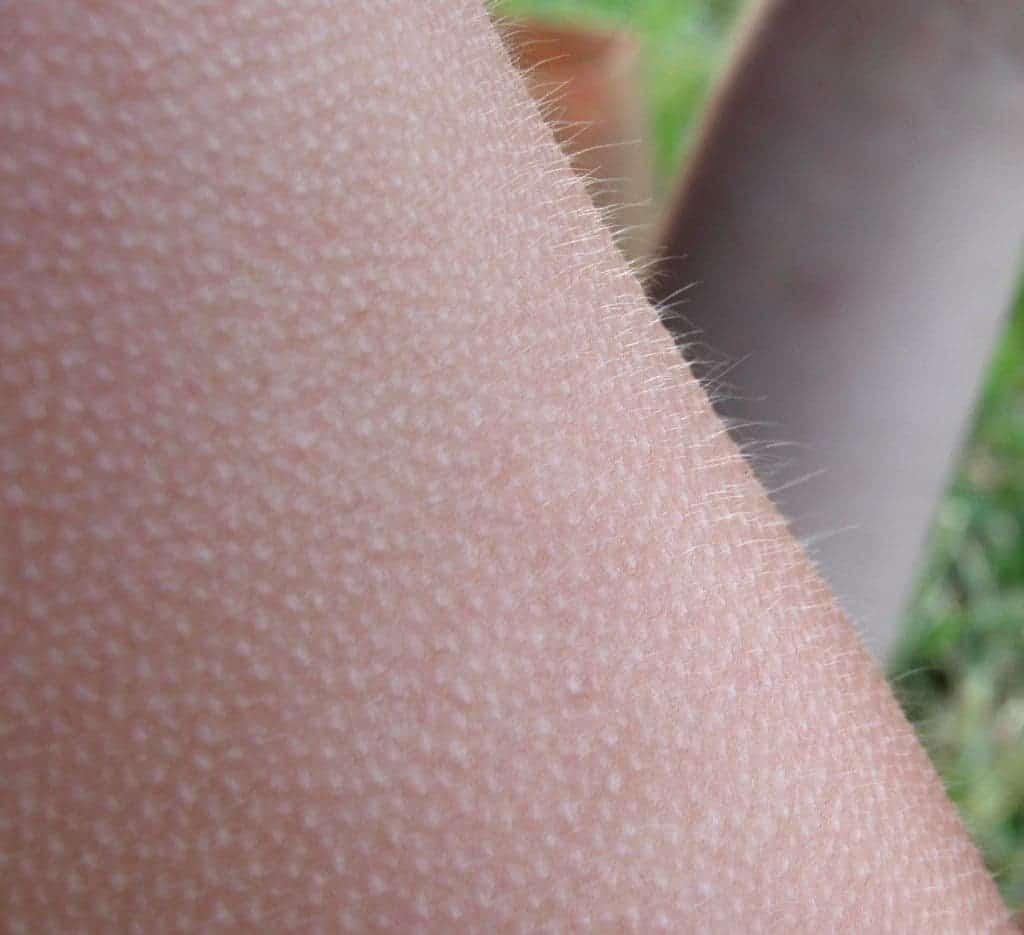Goosebumps are strange. We get goosebumps when we’re cold, when we’re afraid, and sometimes when we’re really excited – three very different situations. But no matter why we get them, goosebumps are tightly connected to a single hormone: adrenaline.

The anatomy of a goosebump
[panel style=”panel-success” title=”Goosebumps form:” footer=””]- when you’re cold
– when you’re threatened
– when you’re excited
– as a response to some medications or diseases[/panel]
By definition, goosebumps are “the bumps on a person’s skin at the base of body hairs which may involuntarily develop when a person is cold or experiences strong emotions such as fear, nostalgia, pleasure, awe, admiration or sexual arousal.” We inherited them from our ancestors, passing them on generation after generation, even though their function has been rendered mostly useless.
Each one of our hairs has tiny muscles at the base called arrector pili muscles. Goosebumps are formed whenever these muscles contract as a response to an external stimulus — which is why they are sometimes called “piloerection” (the erection of hairs).

Goosebumps are a subconscious response to the release of adrenaline; that’s why you can’t get them at will, they happen outside of your control. Adrenaline is a hormone produced by the adrenal glands, located above the kidneys, and some neurons. Adrenaline plays a key role in the flight-or-fight response, by increasing blood flow to muscles, output of the heart, pupil dilation, blood sugar, and giving you goosebumps. Other symptoms of adrenaline include tears, sweaty palms, trembling hands, an increase in blood pressure, a racing heart and the feelings of butterflies in the stomach.
By now, you’re probably wondering what goosebumps have to do with all of these. Well as we mentioned, they’re a subconscious response – it’s something your body does automatically, even if it doesn’t actually help you. But let’s take it one by one.
Goosebumps when you’re scared
When you feel threatened, your body prepares to defend or run away – this is the flight-or-fight response. As is the case with many other mammals, your body is trying to make you seem as large as possible – in this case, by raising the hair on your body, just like a cat does.
“The general principle is, if you are going to be attacked, try to look as big as you can,” says David Huron, a musicologist at Ohio State University.
The idea would be to make the hair on our bodies stand up, thus appearing bigger and more menacing than we actually are. However, nowadays we don’t have as much hair on our bodies as we once had, which means this tactic isn’t really effective, and all we’re left with is the silly looking goosebumps. According to Doctor Richard Potts of the Smithsonian Museum:
“All mammals share this hair raising trait. But humans don’t have enough body hair for the response to make a difference; it’s a vestigial reflex left over from when we had furry coats. “
Goosebumps when you’re cold

This is how goosebumps actually emerged. The reaction is believed to take place in the presence of extremely low temperature. The idea was to contract the muscles and make the hairs stand up, creating an isolating layer to preserve bodily heat.
The combination of piloerection and shivering is very effective for maintaining and even increasing body heat in cold environments. The shivering creates muscle contractions which raise the body temperature, and the fur (through goosebumps) acts as a blanket layer, preserving that temperature.
Goosebumps from emotions
This one is probably the most uncertain and least straightforward scenario. We sometimes feel “the hair on the back of our necks standing up” when we’re excited or afraid, even when we’re listening to music. Jaak Panksepp, a Bowling Green State neurobiologist studied how music can give us goosebumps, finding that it’s almost always sad music giving us goosebumps. He believes that some chemicals in the brain connected social loss are the cause here, but it’s still unclear just why our body reacts like this. Either way, this is still a primeval response.
When you’re afraid, but not in any real danger (say you’re watching a scary movie) goosebumps can actually be a part of a pleasurable act. You feel the thrill and the danger from the movie, your body’s primeval instincts kick in, but the conscious part knows you aren’t in any danger and it’s saying “everything is OK” – which can make you feel good.
Sometimes, piloerection can be connected with sexual arousal. Again, the adrenaline rush is the main cause, but we still don’t know for sure why the body reacts this way.
Other instances
Medications and dietary supplements that affect body temperature and blood flow may cause goosebumps. The same can be caused by a withdrawal from opiates such as heroin, or by health problems such as temporal lobe epilepsy, some brain tumors, and autonomic hyperreflexia.
To conclude, goosebumps are directly connected to an adrenaline rush. They were supposed to either make you seem bigger and more menacing for enemies or protect you from cold – when our bodies were completely covered in hair. However, because they also occur in more complex situations – such as listening to music – there are probably still many things we don’t understand about them.



